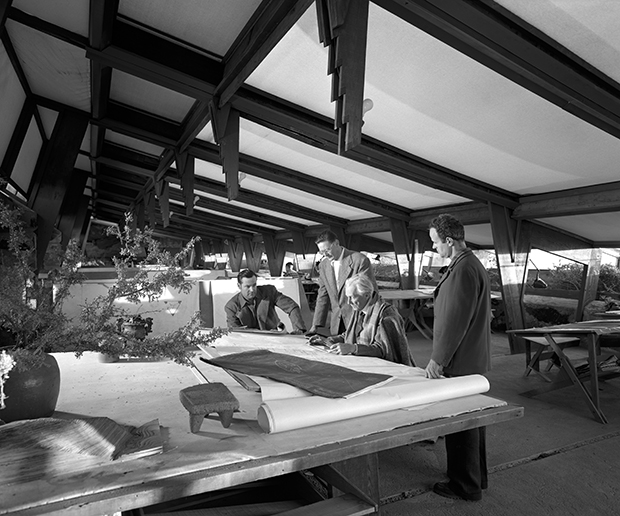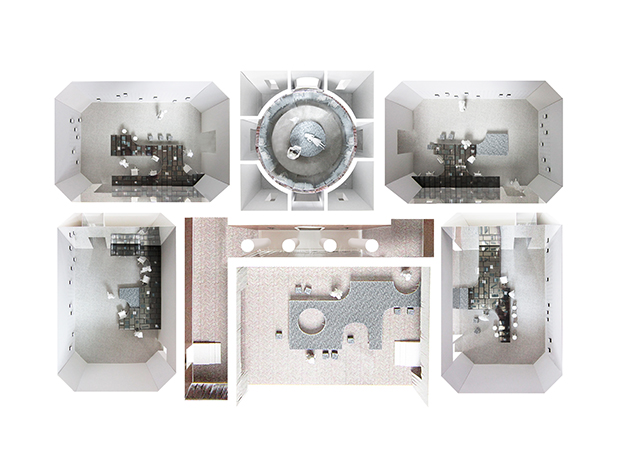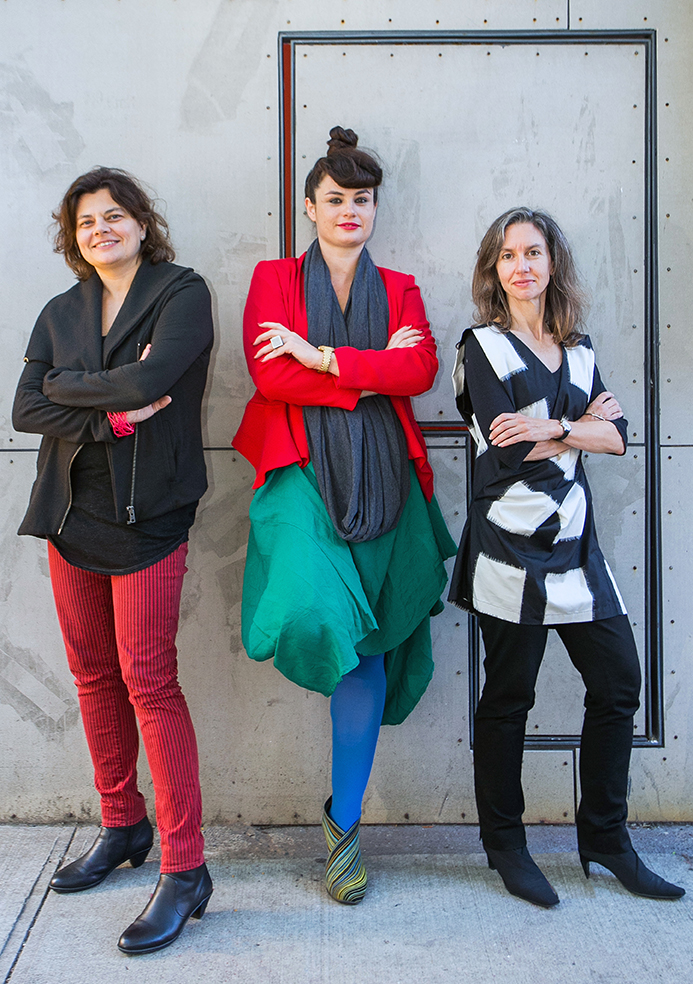
America brings an architect's office to Venice
The American Pavilion’s 'Office US' looks at how Meier, Saarinen and Wright built abroad
What do you expect from an architecture show? Some buildings, surely, be they the constructions themselves, or models, videos and photographs; yet how would you feel being presented with some real, live architects?
At this year’s Venice Biennale, which opens later this week, national pavilions are responding to director Rem Koolhaas’s brief, Absorbing Modernity 1914-2014. Many countries have examined the way 20th and 21st century building techniques influenced their national landscapes, often in a slightly melancholic tone; we’ll be looking at the pavilions over the course of this week.
We’d like to begin by looking at the US pavilion which examines how the country exported its architecture across the globe. This hopeful, innovative installation is called OfficeUS and is overseen by the American curators Eva Franch i Gilabert, Ana Miljački and Ashley Schafer. They draw on seminal architectural offices, including those of Eero Saarinen, Richard Meier and Frank Lloyd Wright.
However, the curators forego a simple museum display, by placing this historical material around “an active, global, experimental architecture office that researches, studies, and remakes projects from an onsite archive of 1,000 buildings and the 200 U.S. based architecture offices engaged in their construction.”
There are eight permanent staff members in OfficeUS, drawn from an open call, as well as a series of visiting experts. Part workshop, part architectural installation, OfficeUS seems like the ideal offering from a nation that’s given us both the Burj Khalifa and the TED Talk.

It is all hugely collaborative, with a great site and plenty of publications either available now or coming soon; you might not see a lot of new architecture, but, the curators say, you might discover a new way of working. “We are setting a stage for the architects and visitors to address and respond to the most pressing architectural anxieties of the last one hundred years,” they assert.
Find out more here. The Venice Architecture Biennale runs 7 June - 14 November. For greater insight into the architects featured, consider our Eero Saarinen, Richard Meier and Frank Lloyd Wright books.

If you're in Venice this week, do join Phaidon Atlas Editor, Jean-Francois Goyette at the British Pavilion June 6, 3-4pm, for in what promises to be a fascinating discussion with architects Stephan Petermann from OMA, Ma Yansong from MAD architects and Diébédo Francis Kéré from Kéré Architects to discuss whether contemporary architecture should pursue national forms or revel in a globalised culture.
You can find out more about the Online Atlas here. Meanwhile, for more on contemporary building, please take a look at The Phaidon Atlas of 21st Century Architecture and the Phaidon Architecture Travel Guide App.